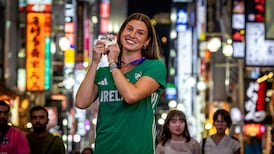This story is part of a series, The Greatest Irish Olympic Stories Never Told, which will run every Saturday in The Irish Times up to the beginning of the 2024 Olympic Games, on Friday, July 26th
The paparazzi were prowling around the KAT Hospital in Athens. The 2004 Olympics were just days away and the biggest story of the Games was the two high-profile Greek sprinters who had faked a bike accident to avoid getting dope-tested. Snappers were dodging hospital security to get into the specially-commissioned Olympic unit. Once inside, they were pulling blankets off patients, trying to get the shot the world was waiting on.
Into this chaos, an ambulance arrived carrying Jamie Costin, the Irish race walker. It was around nine o’clock in the evening and 10 hours had passed since his car had been smashed by a lorry driving on the wrong side of the road. His back was broken and his Olympics were over but he didn’t know either of those things yet. What he did know was that his day hadn’t been lacking in drama and the last thing he needed was more.
The accident happened near Port Heli, 160km away in rural Greece. He had spent the hours since then relying on well-meaning people whose English was as wanting as his Greek. He was ferried in a schoolbus to a couple of local clinics before an ambulance was found to bring him to Athens. He hadn’t had any pain relief – or if he had, it hadn’t made much of a dent.
READ MORE
With the global media on high alert in case the two cheating sprinters turned up, the last thing the hospital wanted was for news to get around that an Olympic athlete was arriving in an ambulance. So they had to sneak him in through a back entrance to avoid the scrum at the front.
Once inside, he was met by a surgeon who was keen to immediately insert titanium rods either side of his spinal cord. “My friend, my friend, I can do this now,” he said, all but sharpening his scalpel by his bedside. Costin didn’t know much about backs or titanium rods but he knew he didn’t like the sound of them in combination.
He was in a lot of pain but he wasn’t agreeing to anything until the Ireland team doctor Seán Gaine got to his side. Soon enough, he didn’t have to fight his corner alone. Pat Hickey, president of the Olympic Council of Ireland, arrived into the hospital, sword drawn, shield raised.
“Keep away from this man!” Hickey instructed the surgeon before turning to Gaine. “Seán – you’re in charge. What you say goes from here on out.”
A surreal end to a long, strange day.
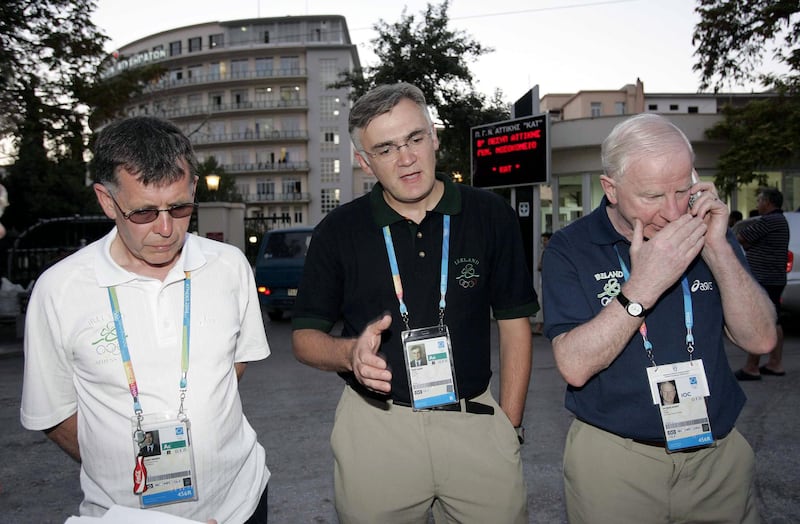
♦◊♦◊♦◊♦◊♦◊♦◊♦◊♦◊♦
By 2004, Costin was 27-years-old and in the shape of his life. What did that mean to you or to anybody outside of the tight, contained world of race walking? Very little, most likely.
Four years earlier, he had gone to Sydney as a wide-eyed kid, throwing himself around the 50km course with abandon and finishing 38th. He arrived home to find one newspaper columnist asking why the country was wasting money on a fella that could only just scrape into the top 40. Costin’s funding that year had been the hardly extravagant sum of £5,000.
The life he picked for himself promised nothing but hardship and still he ate it whole. Between Sydney and Athens, he and Rob Heffernan had gone to learn at the feet of the Polish walking legend Robert Korzeniowski and changed their lives along the way. Maybe because they were no threat to him, Korzeniowski shared everything he knew about the sport with them. Heffernan would eventually become an Olympic bronze medallist (2012) and a world champion (2013).
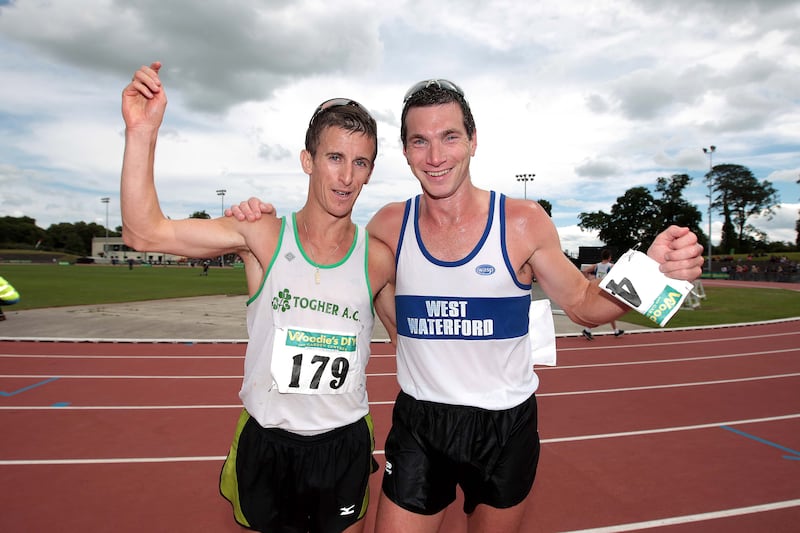
Would Costin have reached those heights? No point in asking, no way of telling. All he can say for sure is that in the spring of 2004, everything was clicking. He wasn’t going to threaten a medal or anything near it. But something in the region of a top-20, top-15 didn’t feel outlandish. Achieve that and keep improving and there was no telling where he’d be by the time Beijing came around.
“I was learning more and more,” he says. “I was avoiding injury, I was training consistently, I was in camp with a triple Olympic champion [Korzeniowski]. As each camp went on, I was able to stay with him for longer and longer and you were able to tell yourself, ‘Jesus, he’s not that far away from me.’
“That standard, that capability to train all the time and not get injured, I was developing that. I was getting to understand what it took. I was able to see him in training and afterwards go, ‘You know what, I can do this as well.’”
Korzeniowski is why he was in Port Heli in the build-up to the Olympics rather than in camp with the rest of the Irish team. All the progress he had made in the previous three years had been achieved in and around the Pole and Costin wanted to keep it that way.
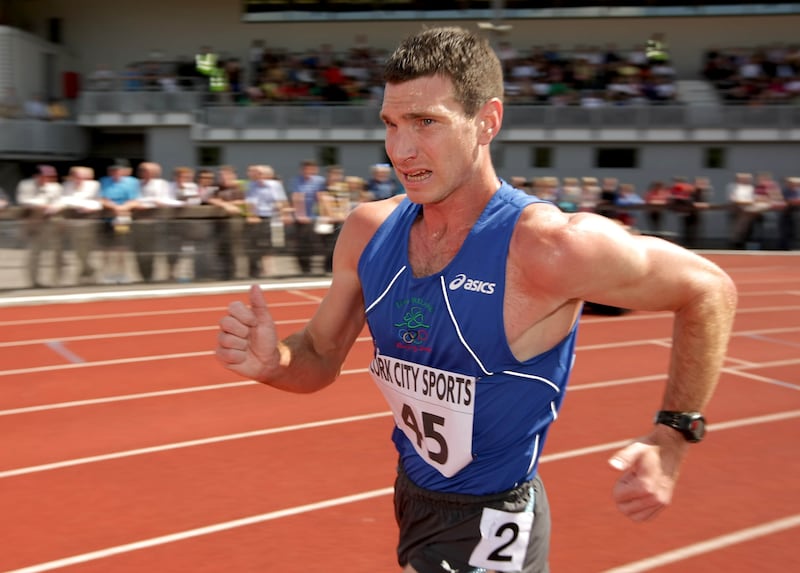
“I spent more time with him that year than his own wife,” he laughs. “My thoughts were to basically stay within the bubble and be in the place where the most opportunity for successful training was going to be. He was an extremely good guy for preparing mentally and I was still only really getting used to finding out what it took to do that at the highest level of competition.
“So I went to Poland for two weeks and then we went to Greece about a fortnight before it was all due to start. He was in a villa that some Greek billionaire with Polish ties had sorted for him. I was in a hotel down the road. We met every morning for training.”
On Tuesday, August 17th, they went for a 12km session in the morning. When it was done, he spent 20 minutes on the phone to Heffernan. It was a sombre call – Gillian O’Sullivan, the Kerry walker who was Ireland’s best medal hope, had been forced to pull out of the games through injury. Heffernan was in camp with her and the mood among the walkers was low. When they were done, Costin got into the car and went to head back to his hotel.
“And then I turned left and got hit by a truck.”
♦◊♦◊♦◊♦◊♦◊♦◊♦◊♦◊♦
In a number of ways, Jamie Costin was lucky that day. Lucky to survive, first and foremost – the truck hit his car once and then caught it again after it spun around. He shattered two vertebrae in his lower back, broke his toe and came within millimetres of damaging his spinal cord. But he was still alive and he wasn’t paralysed.
He was lucky too that it happened in Greece so close to the start of the Games – without Hickey and the whole Olympic industrial complex on hand, his passage back to the spinal unit of the Mater hospital in Dublin would not have been as smooth. He was lucky that Gaine was around as an ally – titanium rods in his back would have meant the end of his race walking career.
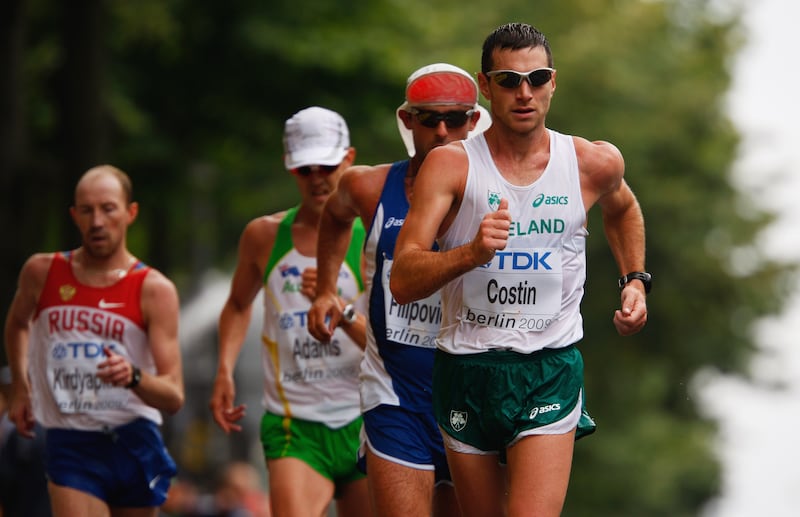
He was flown home on the Thursday. On the air ambulance, a nurse started looking through his chart and asking what pain medication he had been given. When he said he hadn’t a clue really, she administered a dose of morphine.
“That was when I realised how much pain I had been in,” he says. “That was 2½ days after the crash. It was instant relief. You do have to realise that I wasn’t in a normal state of mind. I was getting ready to walk 50km in 40 degree heat.
“I had been getting my body ready for four years and I was at absolutely peak fitness. As an athlete, you’re used to hurting yourself. It was a case of getting through this. For want of a better phrase, the pain is temporary. Get through it and it will be fine.
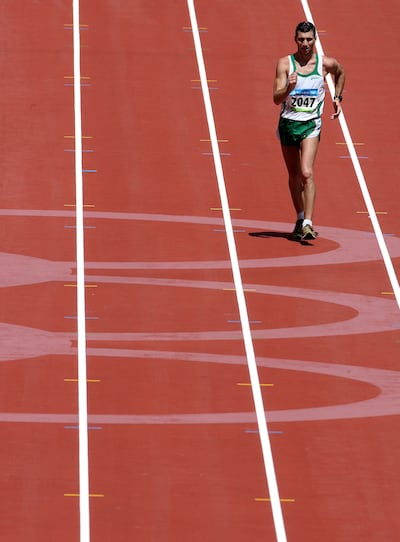
“The night I arrived in Athens, I said to Seán Gaine, ‘I know my foot is pretty bad but will you be able to inject it in time for the race?’ And his look was a mixture of pity and laughing. ‘No,’ he said. ‘You’re not going to be racing. Your back’s broken in two places.’”
The road back was as long and painful as you think it was. In the Mater, they told him there was a way to fix him without surgery but it would involve him wearing a neck-to-hips cast for five months. He agreed immediately. Whatever it took.
“Everybody at some stage goes through something,” he says. “The one thing I had, strange and all as it seems, I had sympathy. Everybody knew about my accident and so everybody felt sorry for me. James Nolan had a neural problem in his hamstring. He had a problem that he couldn’t fix coming from his back.
“He couldn’t train properly, he couldn’t do all the things he needed to. If anybody asked what was wrong with him, all he could say was he had a problem with his hamstring and he couldn’t get it sorted. And that man’s dreams were dashed the same as mine. He got to Athens and he couldn’t physically do what he had the potential to do. But I got a world of sympathy and he got none.”
On the night of the accident, Costin told anyone who asked that he would be back for Beijing in 2008. There were plenty of false starts along the way but eventually he built his body back up to the point where he was able to return to full training towards the end of 2005. That base of fitness he’d built up between Sydney and Athens was gone though and he had to start from scratch again.
He did get to Beijing in the end but could only finish 43rd. Most of us who were there to see it wrote it up as a heroic tale, one man’s fight against the odds, as if just doing it was a miracle in itself. Costin never saw it that way.
“No, it was a deep search of the soul after that,” he says. “I spent four years trying to get back to the Olympics and I was worse when I did. So I had an awful time for two or three months after that. A lot of it was spent going, ‘What am I doing? What’s all that worth?’
“That’s the life of a sportsperson, in the end. It’s nothing but the highs and lows. It’s a very abnormal life but as a sportsperson that’s the way you have to be: ‘Right, that’s happened, how do we fix it? Move on.’
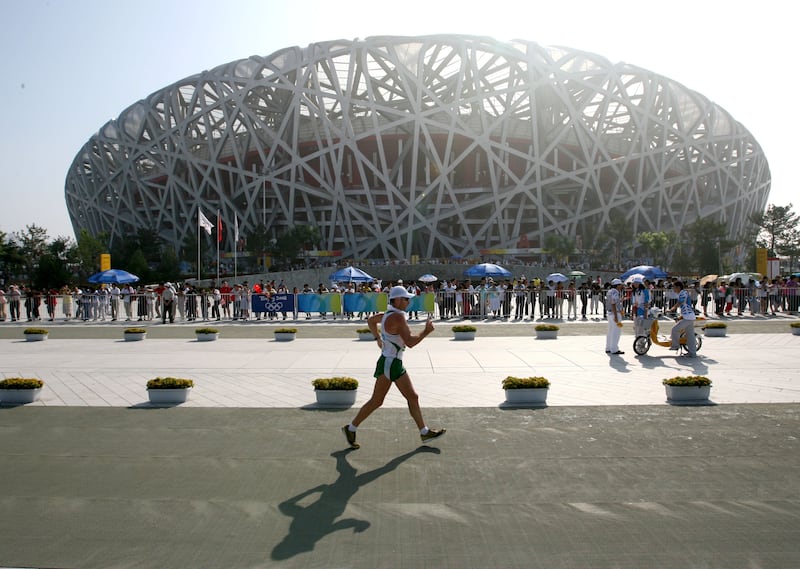
“It’s an extremely mad thing to do, trying to be an Olympian. But I loved racing. Trying to do that mad thing with yourself for so long, you learn so much about yourself. You put yourself into really challenging circumstances so often.”
He’s a farmer now in Ring, Co Waterford. After his dad had a heart attack, he took it over and went completely dairy with it. He does some coaching too, occasionally from the milking parlour, to athletes as far away as South Africa. WhatsApp is a magnificent invention.
A lifetime ago, himself and his buddy/future coach Pierce O’Callaghan landed in Australia. They went to Melbourne and hit upon a couple – she from Geelong, him a Kiwi, both Olympians. The couple found them cheap accommodation and the two boys trained for four months to get ready for the Sydney Olympics. While they were there, the couple had their first baby.
A few weeks back, that baby, all grown up, arrived in Ireland. She’s an athlete now herself and will be staying with Costin and his family for the next six months as she trains and races in Europe for the summer.
“That’s my life in sport,” he says. “Friends all over the world. Great experiences. Not the results I wanted, absolutely not. But it was a mad way to live life and we made the best of it.”








